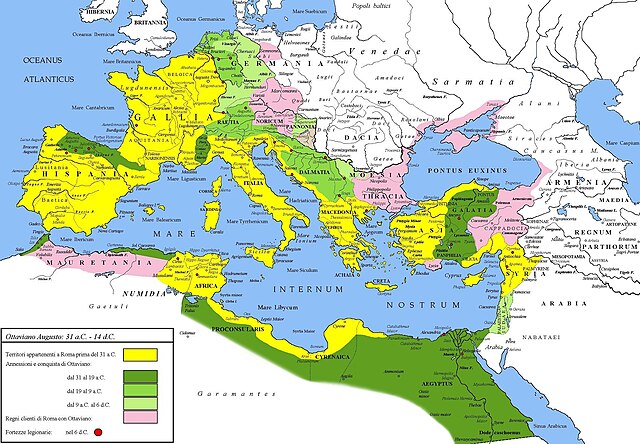Pax Americana is a term applied to the concept of relative peace in the Western Hemisphere and later in the world after the end of World War II in 1945, when the United States became the world's dominant economic, cultural, and military power.
1898 political cartoon: "Ten Thousand Miles From Tip to Tip" meaning the extension of U.S. domination (symbolized by a bald eagle) from Puerto Rico to the Philippines.
1906 political cartoon depicting Theodore Roosevelt using the Monroe Doctrine to keep European powers out of the Dominican Republic
Street art in Caracas, depicting Uncle Sam and accusing the American government of imperialism
The Pax Romana is a roughly 200-year-long period of Roman history which is identified as a golden age of increased and sustained Roman imperialism, relative peace and order, prosperous stability, hegemonic power, and regional expansion. This is despite several revolts and wars, and continuing competition with Parthia. It is traditionally dated as commencing with the accession of Augustus, founder of the Roman principate, in 27 BC and concluding in AD 180 with the death of Marcus Aurelius, the last of the "Five Good Emperors".
Extent of the Roman Empire under Augustus. Yellow represents the extent of the Republic in 31 BC, while green represents gradually conquered territories under the reign of Augustus, and pink areas represent client states.
AR Antoninianus of Gordian III, struck at Antioch 243–244 AD with Pax Augusta on the reverse





